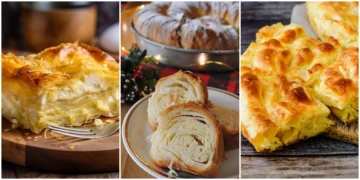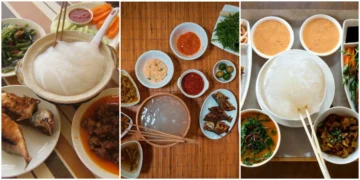Bonaire, Sint Eustatius, and Saba make up part of the Caribbean Netherlands. This part of the world is really unique in that their local traditions are influenced by Africa, Europe, and Latin America. Among the many culinary treasures of these islands, the best food of Bonaire stands out as a beloved comfort food and cultural emblem—Stoba Kabritu.
Why Stoba Kabritu Is the Best Food of Bonaire, Sint Eustatius and Saba?

Stoba Kabritu has earned its reputation as a standout dish because of its savory goat meat stews served with an aromatic medley of spices. This is appreciated with Soba Kabritu for how it varies, warming the heart on a cool evening or during family get-togethers. With the meat being slow-cooked, the spices and vegetables that accompany the dish seep into the flavors which allows for a wonderful blend.
The dish resonates deeply with locals because it reflects the traditional ways of cooking on the islands. For individuals where food serves as a uniting aspect, Stoba Kabritu is both a reminder and a source of cultural identity.
Ingredients of Stoba Kabritu (Best Food of Bonaire)
- Goat Meat (Kabritu): Goat meat serves as the highlight of the dish. Its tangy texture is paired with a distinctive flavor that makes it a sought-after dish in the region. Goat is locally reared for his fine meat, which is needed to prepare the dish. The meat is cut into pieces and then kept for marination with local spices for some time so that it becomes tender.
- Aromatic Vegetables: They include onion, garlic, and bell pepper. These vegetables are known for their sweetness and umami flavor. The goat is first cooked and then the vegetables are added to the stew where they are sautéed until soft and fragrant.
- Tomatoes: Fresh or canned tomatoes are known to provide additional flavor in the Stoba Kabritu stew.
- Combining all Caribbean elements: Thyme and bay leaves fresh add to the Caribbean profile of this stew, as does the distinct local mix made of cumin, paprika, black pepper and even a hint of chili for some heat.
- Meat Sauce: The essence from the slow-cooked meat is deglazed alongside light broth with a hint of citrus, vinegar and spices.
Prepare Stoba Kabritu

- Salt, pepper, and local spices mixed with vinegar and citrus zest starts off the marinating process. Goat meat along with its bones is cleaned, cut into bite-sized pieces, and then thrown in for soaking in flavor while tenderizing meat.
- Go ahead and heat a generously layered oil in a Dutch oven or any heavy pot. Turn the stove to the middle heat setting. Add the chopped peppers, onions, and garlic into the oil and sauté until they are soft and translucent in color. This step is key as it forms the flavor foundation for the stew while also bringing out the vegetable’s sweetness.
- Add the bay leaves, thyme, and the marinated goat meat into the pot. Incorporate diced tomatoes into the stew, after which they must be stirred thoroughly to ensure that the aromatics infuse into the mixture. If possible, a hint of vinegar or citrus juice can be used at this stage for some added zest.
- Pour the light broth or water over the vegetables and the meat until all the ingredients are just submerged.
What Makes Stoba Kabritu Unique?
There are multiple possible differences that set apart Stoba Kabritu from other goat stews around the world. First, its flavor profile is firmly grounded in the Caribbean. The impact of the locals infused with African and European settlers—it features a complex taste to its cuisine.
Not to mention, the abundance of the islands to provide locally raised goats is easily accessible. This adds authenticity and robustness to the stew that mass-produced alternatives simply cannot match. The slow-cooking care allows every bite of the meat to tell a story of spices and herbs, richly blended, making the stew hearty yet comforting to the soul.
Stoba Kabritu serves as a model of culinary creativity. The central recipe remains the same, however, substitutions are made on the islands of Bonaire, Sint Eustatius, and Saba. Each stoba kabritu comes with its own local twist, whether that is a sprinkle of heat, variation in spices, or the addition of new vegetables. Not only does this heighten the dish’s appeal, but also confirms that it is a living symbol of the islands’ culture.
History of Stoba Kabritu (Best Food of Bonaire)

The stoba kapritu wasn’t just created, it developed with the history of Bonaire, St. Eustatius, and Saba. With steep colonial history and rich cultural blends, these islands have always made use of goat meat. Goat ranching soon became a staple of island farming and with it came the best low budget, high quality meals.
Stoba Kabritu came up as an effective yet clever way to feed families and whole communities. It was highly preferred among peasants and fishermen who required a wholesome and filling meal made with basic, local ingredients.
Other Best Food of Bonaire, Sint Eustatius, and Saba
- Pastechi is known as a street food, filled with meat, fish, cheese, and is a delight during short breaks.
- Keshi Yena is the local adaptation of stuffed cheese, incorporating traditional Caribbean spices and ingredients into this robust dish.
- Funchi is a native delicacy made with cornmeal, which is served as a side dish, rather like polenta. It goes well with both stews and seafood.
- Iguana stew is unique to some regions because of the locally sourced iguana meat. It demonstrates the levelheadedness and the unapologetically bold nature of Caribbean cuisine.
- Local seafood specialties—from simple grilling to rich stews.
- Fried plantain or Tostones in the Caribbean, is a versatile dish that can be served as a quick snack.










Discussion about this post